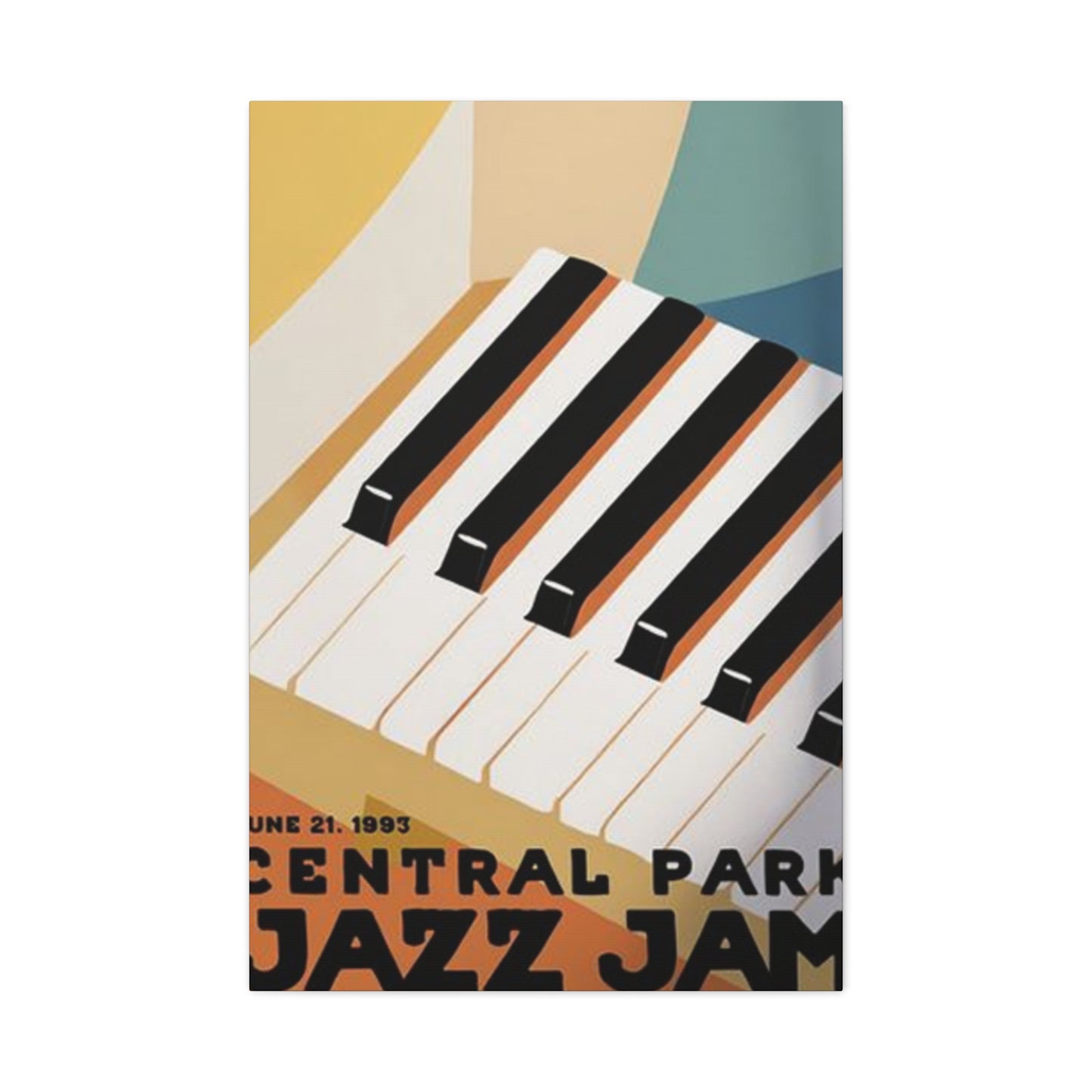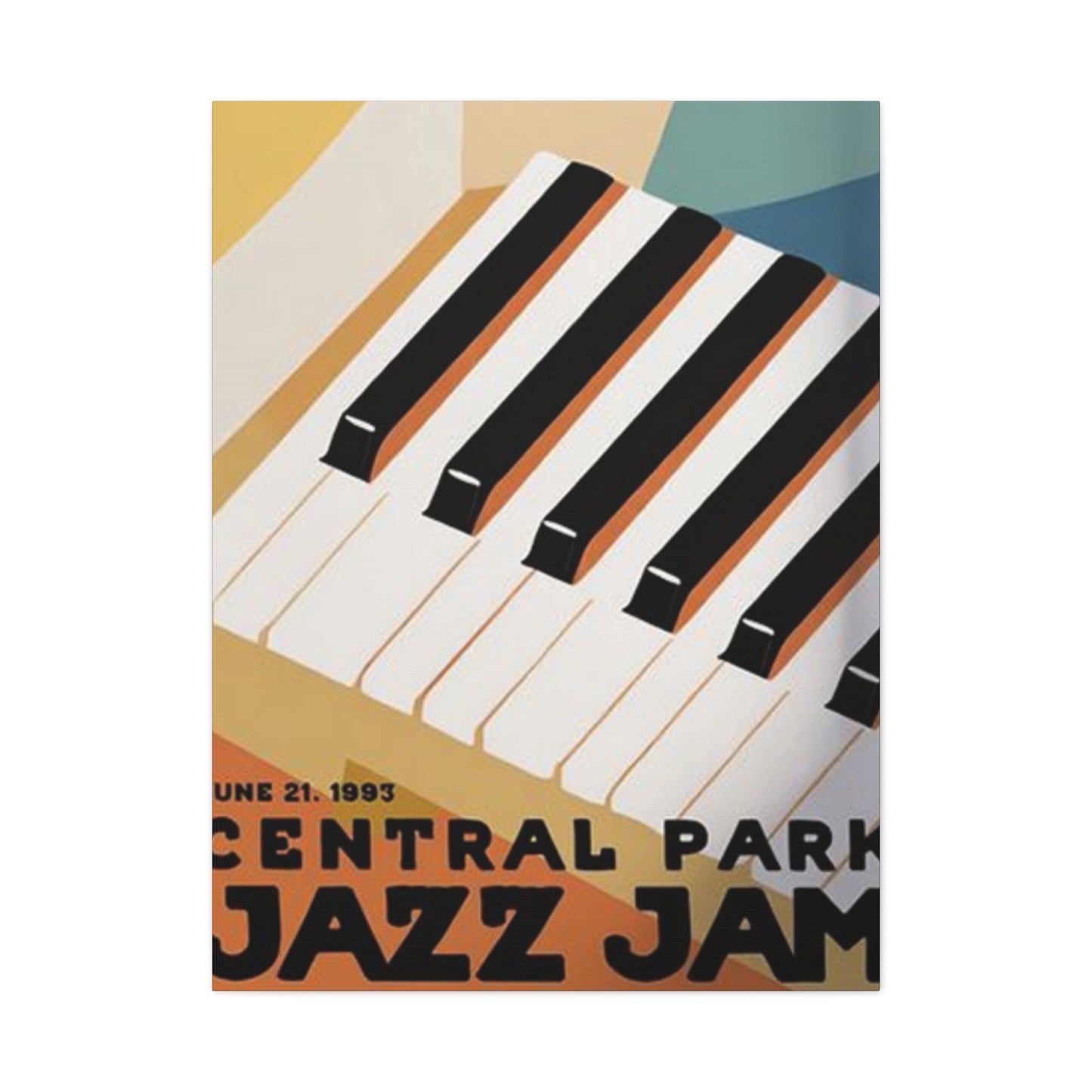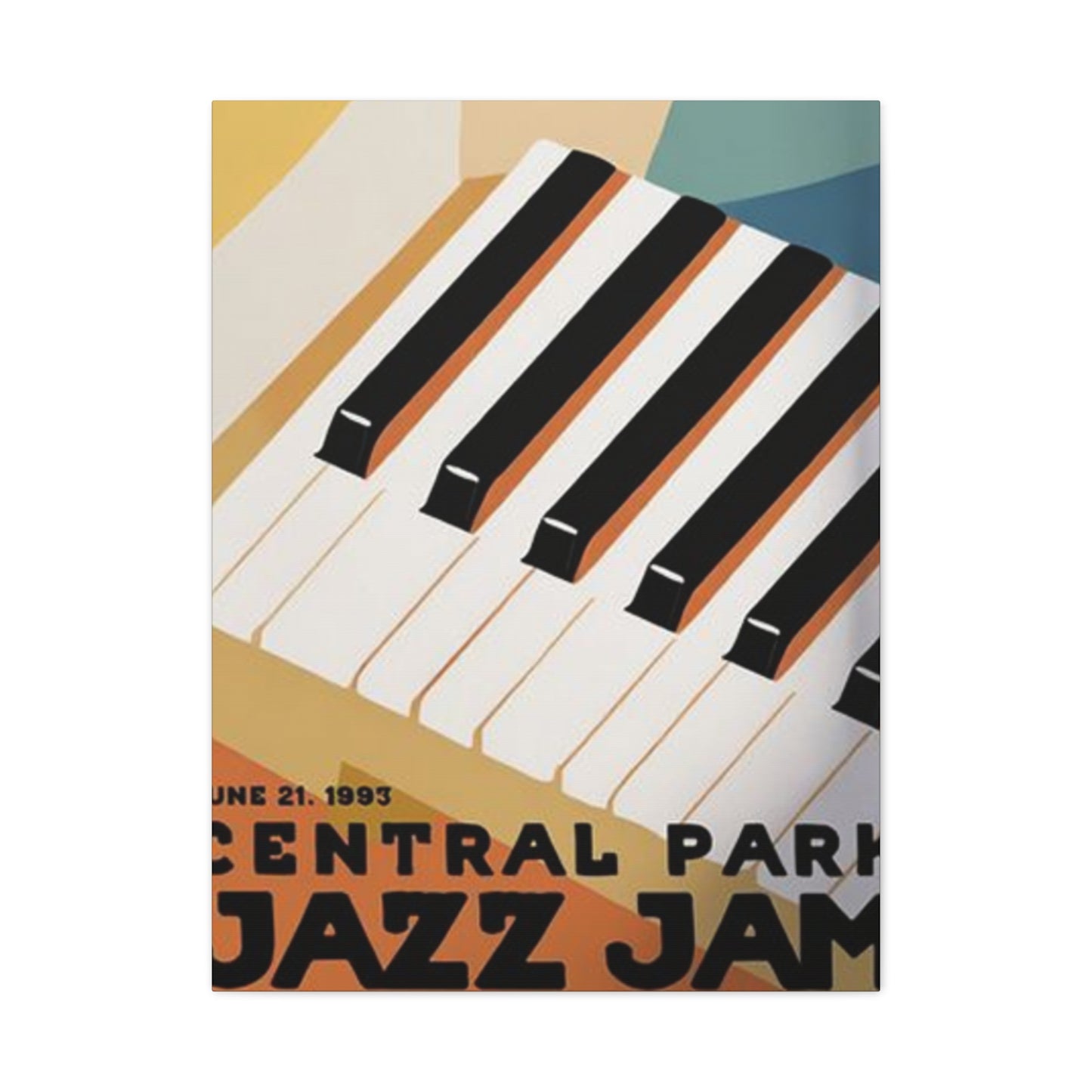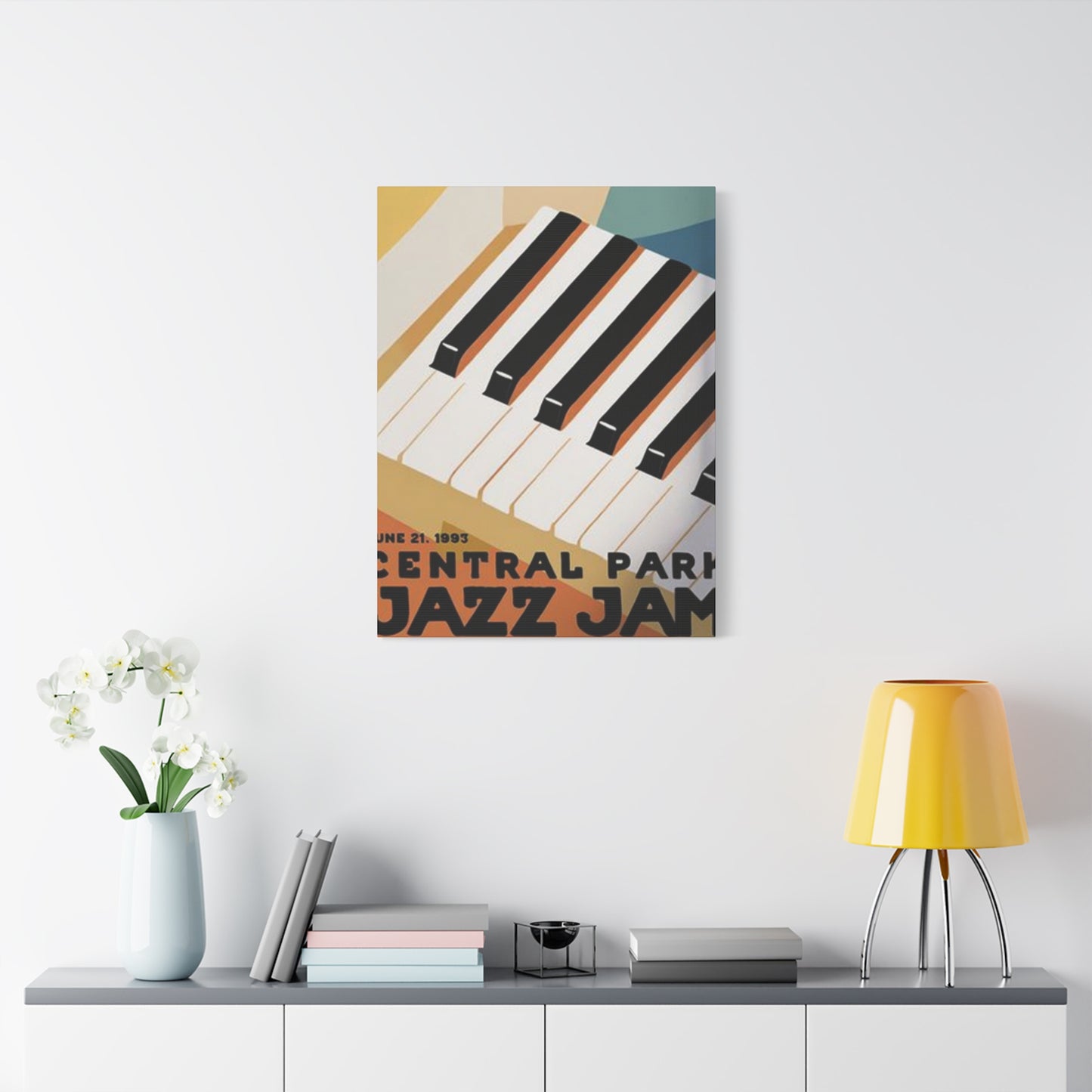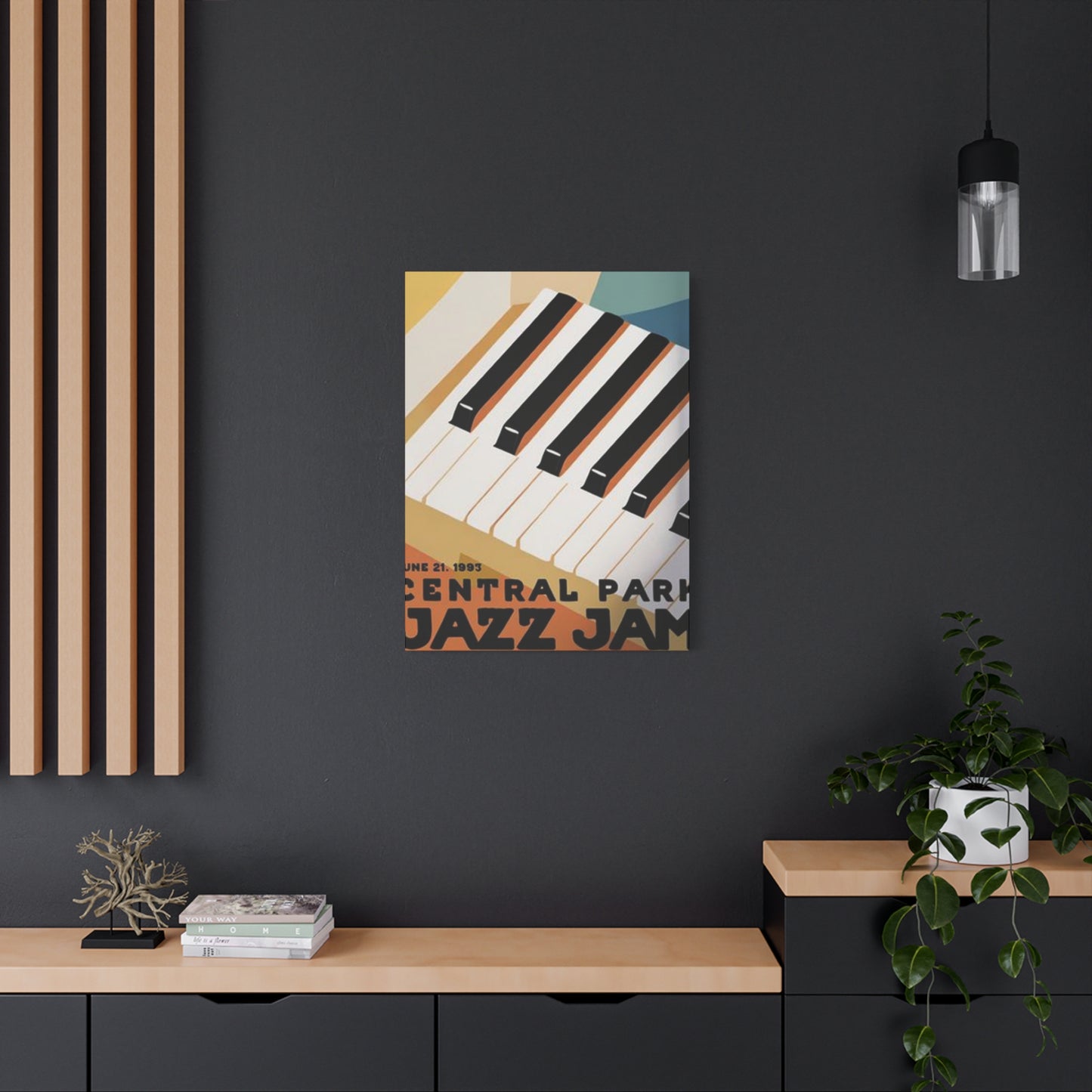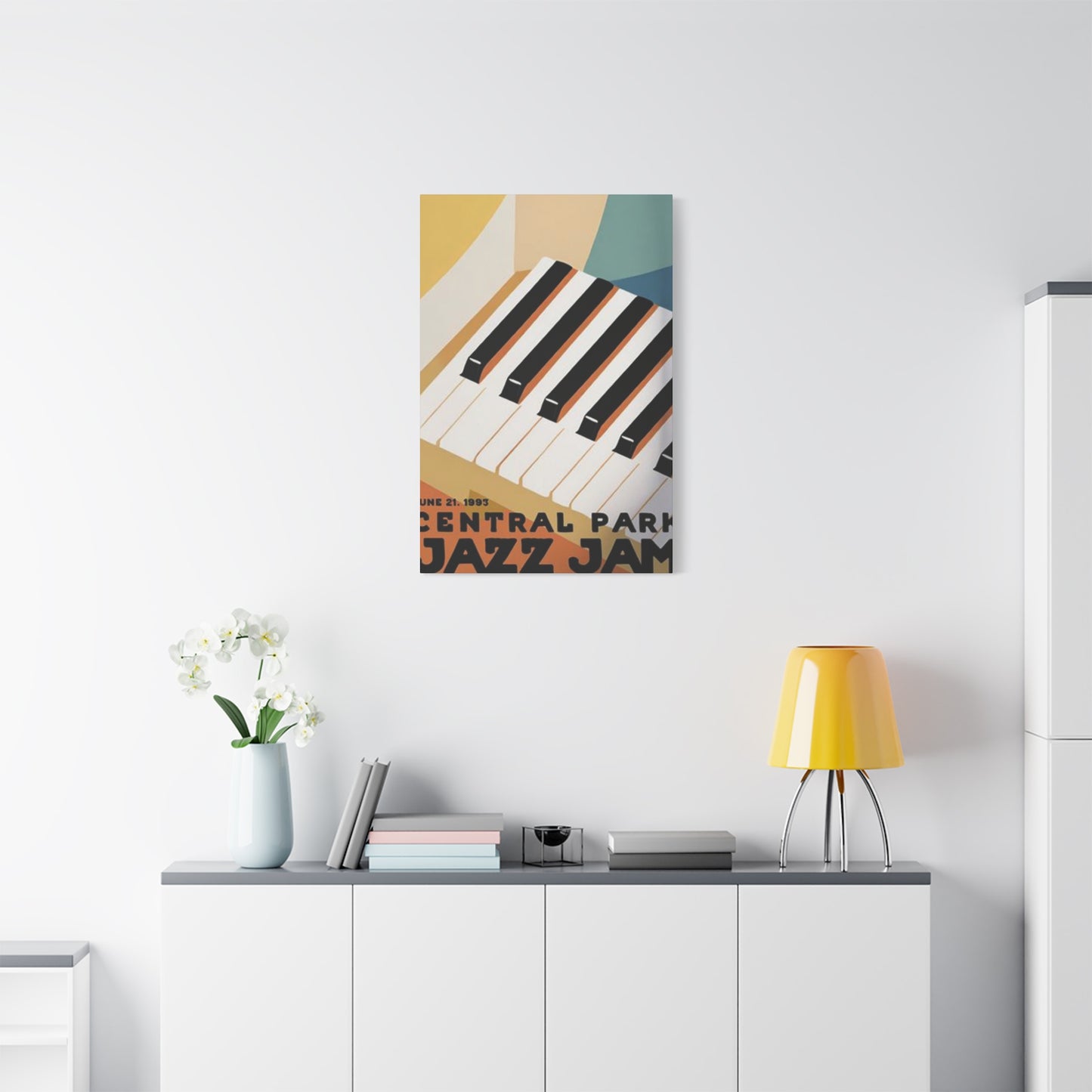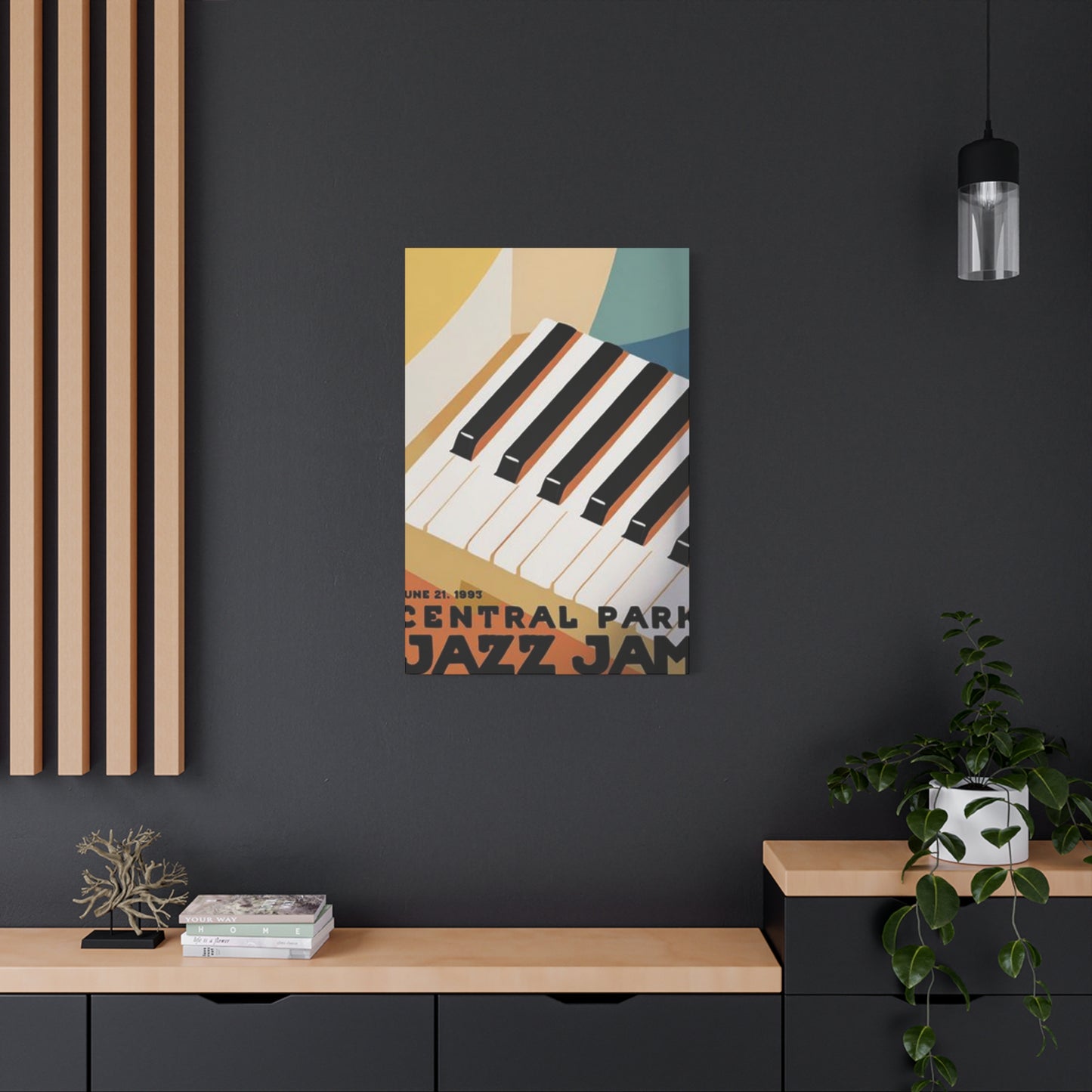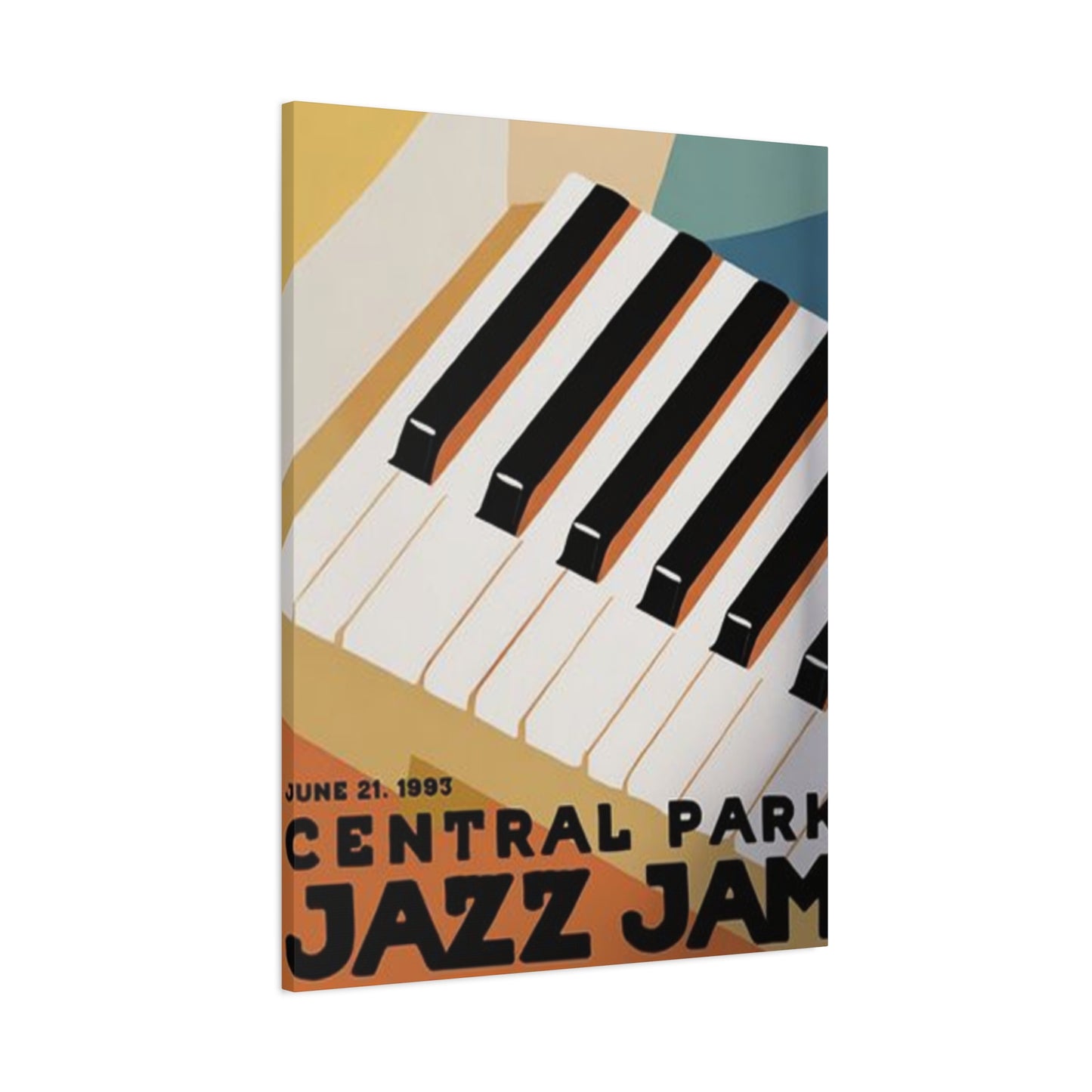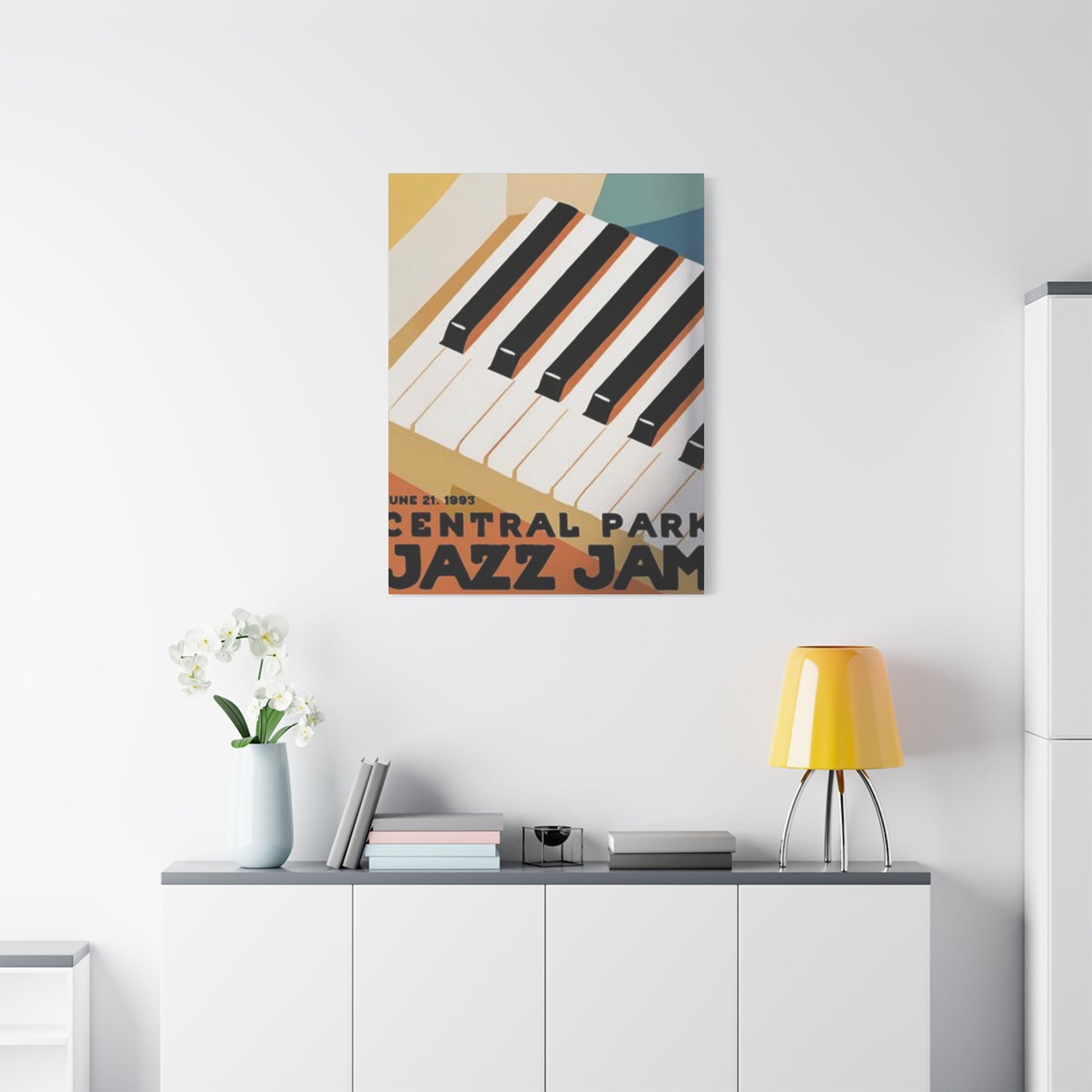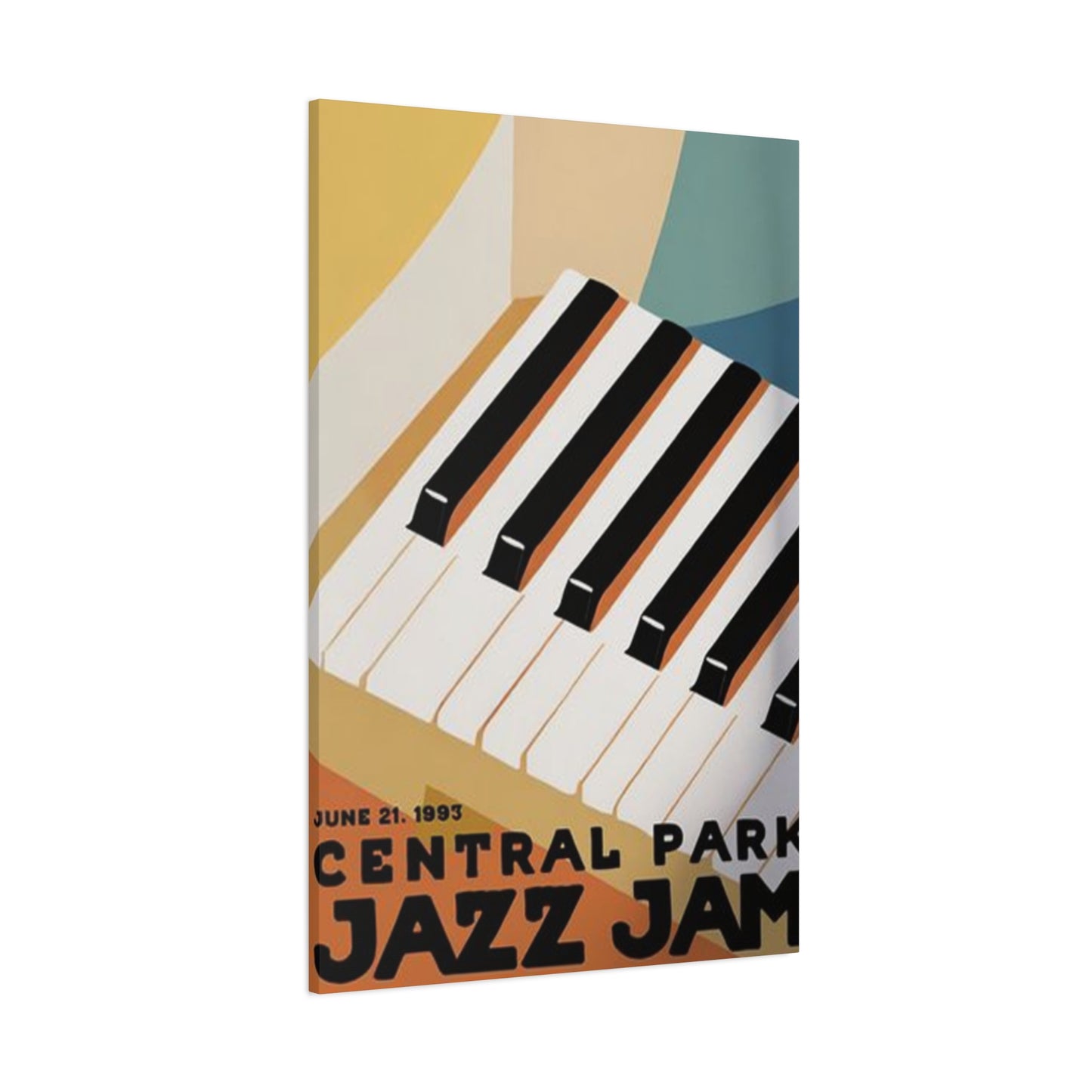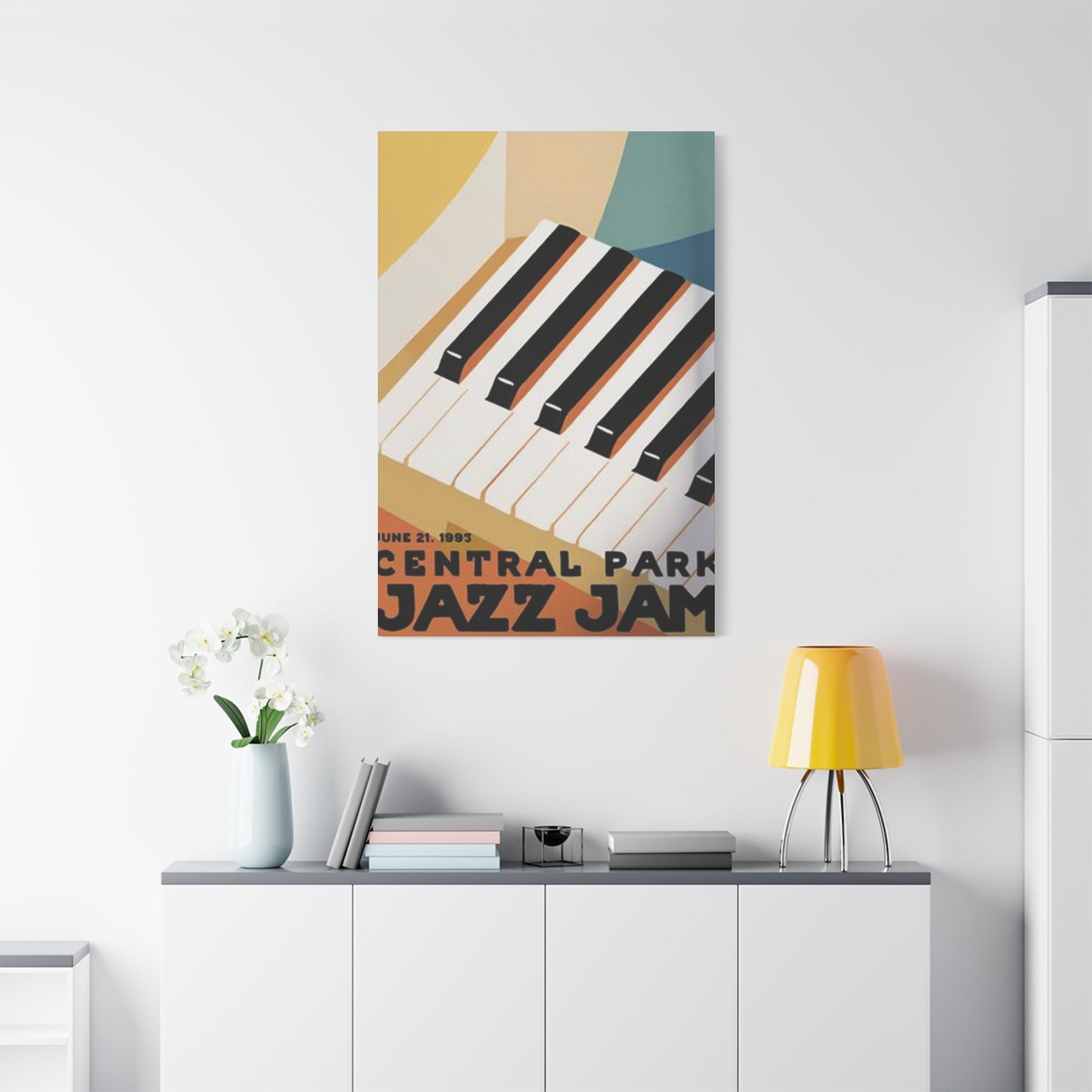Central Park Jazz Jam Wall Art & Canvas Prints
Central Park Jazz Jam Wall Art & Canvas Prints
Couldn't load pickup availability
Central Park Jazz Jam Wall Art: Bringing Musical Soul and Urban Energy Into Your Living Space
Music has always been a powerful force that connects people, evokes emotions, and transforms spaces. When you combine the vibrant energy of jazz with the iconic backdrop of one of the world's most famous urban oases, you create something truly special. Wall art featuring jazz performances in Central Park captures a unique moment in cultural history—one that resonates with music lovers, art enthusiasts, and anyone who appreciates the dynamic spirit of city life.
This type of decorative piece serves multiple purposes in modern interior design. It acts as a conversation starter, a mood setter, and a window into a world where spontaneous musical expression meets natural beauty. Whether you're decorating a cozy apartment, a spacious loft, or a professional office, artwork depicting jazz musicians in their element brings warmth, character, and sophistication to any environment.
The appeal of such artwork extends beyond mere decoration. It represents a lifestyle, a passion, and an appreciation for cultural movements that have shaped our understanding of music and community. Jazz itself embodies improvisation, freedom, and creative expression—qualities that translate beautifully into visual form. When captured against the backdrop of Central Park's lush greenery, historic architecture, and urban landscape, these musical moments become timeless treasures.
The Cultural Significance Behind Jazz Performances in Urban Parks
Jazz music emerged as a revolutionary art form that broke boundaries and challenged conventions. Its roots in African American communities gave voice to experiences, struggles, and celebrations that needed expression. Over time, jazz evolved into a universal language that transcends cultural barriers and speaks directly to the human experience.
Urban parks became natural gathering places for musicians and audiences alike. These green spaces within bustling cities provided free, accessible venues where people from all walks of life could come together and enjoy live performances. The democratization of music through park performances helped jazz reach wider audiences and cemented its place in American culture.
Central Park, in particular, holds special significance in this narrative. Since its creation in the mid-19th century, this 843-acre sanctuary has served as a cultural hub for New York City. Musicians have been drawn to its open spaces, acoustic properties, and diverse audiences for generations. Informal jam sessions often spring up in various locations throughout the park, creating magical moments where strangers become united through shared musical appreciation.
These spontaneous gatherings represent something profoundly important—the idea that art belongs to everyone, not just those who can afford concert tickets. Street musicians and park performers keep this tradition alive, demonstrating that music thrives in open, welcoming environments. Artwork commemorating these moments preserves the spirit of accessibility and community that defines jazz culture.
The visual representation of these performances captures more than just musicians playing instruments. It freezes a moment of cultural exchange, showing the interaction between performers and their surroundings. The dappled sunlight filtering through tree leaves, the mix of focused musicians and appreciative listeners, the casual yet profound nature of the gathering—all these elements combine to tell a larger story about urban life and artistic expression.
Selecting the Perfect Piece for Your Personal Space
Choosing artwork that truly resonates with your personal taste requires thoughtful consideration. The right piece should complement your existing decor while also standing out as a focal point that draws attention and sparks interest. When evaluating options featuring jazz performances in park settings, several factors come into play.
Size considerations rank among the most important decisions you'll make. A large canvas can dominate a room and serve as the centerpiece of your decorating scheme, while smaller pieces work well in collections or intimate spaces. Measure your available wall space carefully before committing to a particular size. Consider the viewing distance—larger rooms benefit from bigger pieces that can be appreciated from across the space, while smaller areas call for more modest dimensions.
Color palette plays a crucial role in how artwork integrates with your environment. Jazz-themed pieces often feature rich, warm tones—deep blues reminiscent of Blue Note album covers, golden yellows suggesting sunlight filtering through leaves, earthy browns representing wooden instruments and park benches. Some pieces lean toward monochromatic or black-and-white treatments, emphasizing form and composition over chromatic variety. Consider which approach harmonizes with your existing color scheme while still providing visual interest.
The artistic style significantly impacts the overall feel of the piece. Realistic renderings capture detail and authenticity, making viewers feel as though they're witnessing an actual performance. Abstract interpretations focus on the emotional essence of jazz, using flowing lines and dynamic shapes to suggest movement and sound. Impressionistic approaches blend these elements, offering recognizable scenes rendered with loose, expressive brushwork that conveys atmosphere and mood.
Subject matter within jazz performance art varies considerably. Some pieces focus tightly on musicians, highlighting the concentration and skill visible in their faces and hands. Others pull back to show the broader scene—audiences gathered on blankets, children dancing, couples swaying together. The level of detail regarding specific instruments can also differ, with some artists lovingly rendering every valve on a trumpet while others suggest instruments through simplified forms.
The emotional tone conveyed by the artwork deserves careful consideration. Some pieces emphasize the joyful, celebratory aspects of jazz performance, showing smiling musicians and energetic crowds. Others capture the more contemplative, introspective side of the music, depicting solo performers lost in their craft or small groups engaged in serious musical conversation. Match the emotional register of the artwork to the atmosphere you want to create in your space.
Understanding Different Artistic Mediums and Their Unique Qualities
The medium through which Central Park Jazz Jam Wall Art is created significantly influences its appearance, durability, and price point. Each medium offers distinct advantages and aesthetic qualities that appeal to different preferences and requirements.
Canvas prints represent one of the most popular choices for contemporary wall art. The texture of canvas lends depth and dimension to images, creating a traditional gallery feel that many people find appealing. High-quality canvas prints can replicate the look of original paintings remarkably well, offering accessibility to iconic images at fraction-of-original prices. The fabric nature of canvas allows for some flexibility in hanging and can wrap around frame edges for a clean, modern presentation.
Metal prints have gained considerable popularity in recent years for their striking visual impact. Images printed on aluminum create vibrant colors with impressive depth and a subtle sheen that catches light beautifully. Metal prints work particularly well for contemporary spaces with industrial or modern aesthetics. They're also highly durable and resistant to environmental factors, making them practical choices for high-traffic areas or spaces with varying humidity levels.
Acrylic prints offer another modern option that creates stunning visual effects. The process involves printing the image on the reverse side of acrylic glass, which produces extraordinary color vibrancy and depth. Light passes through the acrylic, illuminating the image from within in a way that traditional prints cannot match. These pieces have a clean, contemporary appearance that works beautifully in modern or minimalist settings.
Traditional paper prints remain a classic choice, particularly when professionally matted and framed. Fine art papers vary considerably in texture, weight, and finish, from smooth matte surfaces to glossy photo papers. Museum-quality archival papers ensure longevity, resisting fading and deterioration over time. Paper prints offer the most flexibility in terms of matting and framing options, allowing for extensive customization.
Original paintings, while typically more expensive, provide unique value as one-of-a-kind artworks. Oil paintings offer rich colors and visible brushstrokes that add tactile interest, while acrylics provide vibrant hues with quicker drying times. Watercolors capture a softer, more ephemeral quality that can beautifully suggest the fleeting nature of outdoor performances. Owning an original means possessing something truly unique—no other piece exactly like it exists anywhere in the world.
Wood-mounted prints create a rustic, organic feel that complements casual or eclectic decorating styles. The visible grain of the wood adds texture and warmth, creating a handcrafted appearance. These pieces work particularly well in spaces with natural elements like exposed beams, hardwood floors, or stone features.
Framing Options That Enhance Your Artwork
The frame you choose can dramatically alter the impact and appearance of your jazz-themed wall art. Proper framing not only protects the artwork but also helps integrate it into your overall design scheme.
Traditional wood frames offer timeless appeal and come in countless finishes, from light natural woods to deep mahogany stains. Ornate carved frames suggest classical elegance, while simple, clean-lined wooden frames complement both traditional and contemporary spaces. The grain and color of wood frames add warmth that often pairs beautifully with the organic subject matter of park scenes.
Metal frames provide sleek, modern lines that work well in contemporary settings. Black metal frames create bold contrast and sharp definition, while silver or gold tones add sophistication. Thin metal frames maintain a minimalist aesthetic, allowing the artwork itself to remain the focus without distraction.
Floating frames create the illusion that artwork hovers within the frame, adding dimension and visual interest. This mounting style works particularly well with canvas and wood prints, creating a gallery-quality presentation that suggests the piece is more valuable than it might actually be.
Gallery-style frameless mounting presents artwork in its purest form, without any border or barrier between the image and the viewer. This approach works best with canvas wraps where the image continues around the edges, or with mounted prints that can stand alone without additional support. The clean, uninterrupted appearance suits modern and minimalist spaces.
Shadow box frames add depth by creating space between the artwork and the frame glass. This mounting style works beautifully when you want to emphasize the texture of canvas or paper, or when incorporating dimensional elements alongside the print. The added depth creates interesting light play and makes the piece more sculptural.
Custom matting provides opportunities to personalize your presentation. Mat colors can either complement colors within the artwork or provide contrasting tones that make the image pop. Multiple mats in coordinating colors create a layered, sophisticated look. The width of matting influences perception—wider mats suggest importance and create breathing room, while narrower mats keep focus tightly on the image.
Placement Strategies for Maximum Visual Impact
Where and how you hang your Central Park Jazz Jam Wall Art significantly affects its impact on your space. Thoughtful placement ensures the piece receives appropriate attention while contributing to overall room harmony.
Eye level positioning remains the standard guideline for artwork placement. In practice, this means the center of the artwork should hang approximately 57 to 60 inches from the floor—the average human eye height. This positioning feels natural and comfortable for viewing. However, circumstances may call for adjustments to this rule, particularly in rooms with unusually high or low ceilings.
Living room placement often works best above major furniture pieces like sofas or consoles. When hanging art above a sofa, maintain approximately 6 to 12 inches of space between the furniture top and the artwork bottom. The width of the art should ideally measure between two-thirds and three-quarters the width of the furniture below it, creating visual balance without overwhelming the space.
Dining areas benefit from artwork that encourages conversation and creates ambiance. Jazz-themed pieces naturally facilitate discussion, making them excellent choices for walls visible from the dining table. Consider how the artwork looks under both natural and artificial light, as dining rooms often transition between different lighting conditions throughout the day.
Bedroom placement should promote relaxation and personal connection. Many people choose artwork with special meaning for private spaces, and the contemplative nature of jazz performance art suits bedroom environments well. Hanging art opposite the bed ensures it's the first thing you see upon waking and the last before sleep—a privilege reserved for pieces that truly resonate with you.
Home office or study placement can inspire creativity and provide pleasant visual breaks during work. Jazz music and its visual representation can stimulate creative thinking and problem-solving. Position artwork where you can easily glance at it during moments of reflection without it becoming a distraction from focused work.
Hallway galleries create dynamic visual journeys through your home. Jazz performance art works beautifully in series, showing different moments, perspectives, or moods. Maintain consistent spacing between pieces—typically 3 to 6 inches depending on frame size—and hang them at consistent heights for a cohesive, professional appearance.
Entryway placement makes a strong first impression on visitors while setting the tone for your entire home. A striking jazz-themed piece immediately communicates your appreciation for music, culture, and artistic expression. Ensure adequate lighting highlights the artwork effectively, as entryways sometimes lack natural light.
Lighting Considerations That Bring Your Artwork to Life
Proper lighting transforms good artwork into stunning displays. The way light interacts with your Central Park Jazz Jam Wall Art influences color perception, detail visibility, and overall impact.
Natural light offers the most accurate color rendering but varies considerably throughout the day and across seasons. North-facing walls receive consistent, indirect light that minimizes glare and doesn't change much throughout the day, making them ideal for displaying artwork. South-facing locations receive strong, direct sunlight that can cause fading and makes viewing difficult during peak hours. East and west exposures experience dramatic light changes between morning and afternoon.
UV protection becomes essential for artwork in naturally lit spaces. UV-filtering glass or acrylic in frames blocks harmful rays that cause fading and deterioration. Window treatments like sheer curtains or UV-blocking films help protect wall art from direct sunlight while still allowing illumination. Some printing and painting mediums resist fading better than others, with archival-quality prints and light-fast paints offering superior longevity.
Picture lights mounted directly above or below artwork provide dedicated illumination that makes pieces stand out dramatically. These fixtures come in various styles, from traditional brass picture lights to sleek, minimal LED strips. Position picture lights to eliminate glare on glass-covered pieces while providing even illumination across the artwork surface. LED picture lights offer energy efficiency and produce minimal heat, protecting artwork from temperature damage.
Track lighting creates flexible highlighting systems that can adjust as your art collection changes. Individual fixtures on ceiling-mounted tracks can be repositioned and angled to highlight specific pieces. Use adjustable beam widths to either spotlight small artworks or flood-light larger pieces. The ability to control each fixture independently allows for sophisticated lighting designs that create depth and visual hierarchy.
Recessed spotlights offer unobtrusive lighting that maintains clean ceiling lines while providing effective artwork illumination. Adjustable fixtures allow precise beam placement, while fixed housings work well when artwork location remains permanent. Dimmer switches provide control over light intensity, allowing you to adjust ambiance for different occasions or times of day.
Accent lighting from floor or table lamps can effectively highlight artwork when overhead lighting isn't feasible. Uplights positioned below artwork create dramatic effects, though this approach requires careful management to avoid casting distracting shadows. Side lighting from table lamps on adjacent furniture can beautifully illuminate pieces while serving multiple purposes in the room.
Color temperature affects the mood and appearance of your artwork. Warm light (2700-3000K) creates cozy, inviting atmospheres and enhances warm tones within artwork but may make cool colors appear muddy. Cool white light (3500-4100K) provides more accurate color rendering and creates clean, contemporary feelings. Daylight-balanced bulbs (5000-6500K) offer the most neutral light but can feel harsh in residential settings. Choose bulb temperatures that complement both the artwork and the room's overall atmosphere.
Complementary Decor Elements That Create Cohesive Spaces
Your Central Park Jazz Jam Wall Art can serve as the anchor for a themed room design or blend into a carefully curated eclectic mix. Supporting decor elements help create unified spaces that feel intentional and well-designed.
Color coordination extends the palette found in your artwork throughout the room. Pull accent colors from the piece and introduce them through throw pillows, blankets, rugs, or other accessories. This technique creates visual connections that tie disparate elements together. You might echo the deep blues of a twilight jazz scene through navy throw pillows, or reflect sunset oranges through carefully chosen accent pieces.
Musical instruments displayed as sculptural objects reinforce the jazz theme without overwhelming it. A vintage trumpet on a shelf, a saxophone silhouette as wall decor, or even actual playable instruments mounted securely create three-dimensional interest that relates directly to your artwork's subject matter. These pieces add authenticity and depth to your design narrative.
Books about jazz history, musician biographies, or music theory displayed on coffee tables or shelves signal your genuine interest in the subject beyond mere decoration. These items invite guests to engage with the theme on a deeper level and provide natural conversation starters. Vintage album covers in frames create gallery walls that expand your jazz theme while adding historical and graphic design interest.
Textured fabrics introduce tactile variety that prevents spaces from feeling flat or one-dimensional. Velvet pillows suggest the luxury of jazz-age lounges, while linen curtains provide casual sophistication reminiscent of outdoor gatherings. Woven textiles add organic warmth that complements park imagery, creating connections between indoor and outdoor elements.
Plants and natural elements bridge the gap between urban settings and park greenery featured in your artwork. Incorporating houseplants, particularly larger specimens like fiddle leaf figs or monstera, brings life and organic shapes into your space. Natural wood furniture, stone accents, or botanical prints strengthen the connection to nature represented in Central Park scenes.
Lighting fixtures themselves can reinforce your design theme. Industrial-style pendant lights evoke the urban environment, while Edison bulbs suggest vintage aesthetics that align with jazz's golden era. Brass or gold fixtures add warm metallic tones that complement traditional jazz instrument finishes.
Period-appropriate furniture pieces transport rooms backward in time. Mid-century modern chairs, art deco side tables, or vintage leather sofas create settings where your jazz-themed artwork feels perfectly at home. Even one or two carefully chosen vintage pieces can establish a temporal connection without requiring complete room remodeling.
Different Artistic Interpretations of Jazz Performance Scenes
Artists approach the subject of jazz performances in parks from countless perspectives, each bringing unique vision and style to their work. Understanding these different interpretations helps you identify pieces that resonate with your personal aesthetic preferences.
Photorealistic representations capture every detail with precision and accuracy. These pieces document specific moments with journalistic clarity, showing exactly what instruments musicians play, what they're wearing, and how audiences respond. The skill required to achieve this level of detail demands respect, and the results often feel like frozen time—windows into actual performances that viewers can almost hear.
Impressionistic works prioritize mood and atmosphere over precise detail. Loose brushwork and soft edges create dreamy qualities that suggest the ephemeral nature of live music. Colors might blend and blur, mimicking how sound waves overlap and interact. These pieces often feel more emotional than documentary, capturing the feeling of being at a performance rather than the literal facts of it.
Abstract interpretations break down the subject into shapes, colors, and patterns that represent jazz's essence rather than its literal appearance. Flowing lines might suggest saxophone melodies, while sharp angles could represent drum beats. Bold color blocks might indicate different instruments or musical sections. These pieces require more imaginative engagement from viewers but offer deeper, more personal connections once that engagement occurs.
Cubist approaches present multiple perspectives simultaneously, showing instruments and musicians from various angles within a single composition. This fractured, geometric style mirrors jazz's complex layering of sounds and its tendency to approach melodies from unexpected angles. The intellectual complexity of cubism pairs naturally with jazz's sophisticated musical structures.
Folk art styles bring whimsical, accessible qualities to jazz imagery. Simplified forms and bright colors create cheerful, approachable pieces that celebrate music's joy without pretension. These works often have naive or primitive qualities that emphasize the democratic, populist nature of park performances where everyone is welcome.
Expressionist works emphasize emotional intensity through exaggerated forms and dramatic color choices. Distorted figures and bold contrasts convey the passion and power of jazz performance. These pieces often feel energetic and dynamic, as though the music's volume and intensity have physically manifested in the painting itself.
Collage and mixed-media pieces incorporate various materials and techniques, layering photographs, painted elements, sheet music, and textural components. These complex works mirror jazz's own mixing of influences and styles. The physical depth of mixed media creates tactile interest while the conceptual layering rewards careful examination.
Size Considerations for Different Room Proportions
The scale relationship between artwork and its surrounding space dramatically affects visual harmony. Choosing appropriately sized pieces ensures your Central Park Jazz Jam Wall Art makes the intended impact without overwhelming or disappearing within your room.
Small spaces require careful scaling to avoid claustrophobia while still making statements. In compact rooms, a single medium-sized piece often works better than multiple small ones, which can create visual clutter. Pieces measuring 16x20 to 24x36 inches typically suit apartments, small bedrooms, or cozy offices. Despite size constraints, don't default to tiny art—pieces that are too small for their surroundings get lost and fail to anchor spaces effectively.
Medium-sized rooms offer more flexibility and can accommodate a wider range of artwork dimensions. Standard living rooms, master bedrooms, and home offices typically work well with pieces ranging from 24x36 to 40x60 inches. At this scale, artwork can serve as clear focal points without dominating. Multiple medium pieces can create gallery walls that fill larger expanses without requiring massive single works.
Large, open spaces demand substantial artwork to maintain proper proportions. Great rooms, loft apartments, and commercial spaces need bold pieces measuring 40x60 inches or larger to avoid looking insignificant against expansive walls. Oversized single pieces create drama and sophistication, serving as commanding presence that defines spaces. Alternatively, large walls can accommodate multiple coordinated pieces arranged thoughtfully to create unified installations.
Ceiling height influences appropriate artwork dimensions beyond simple width and height measurements. Standard 8-foot ceilings suit most common art sizes, but higher ceilings change the equation considerably. Rooms with 10-foot or higher ceilings benefit from vertically oriented pieces that draw the eye upward, or from arrangements that stack multiple pieces to utilize available height without leaving awkward gaps.
Furniture scale beneath artwork affects size decisions significantly. Large sectional sofas require substantial art above them to avoid looking out of balance. A 90-inch sofa typically pairs best with artwork measuring at least 60 inches wide, either as a single large piece or a grouping. Smaller furniture pieces naturally work with more modestly sized art.
Architectural features like windows, doorways, and built-in elements influence available wall space and appropriate artwork sizing. Measure usable wall sections carefully, accounting for clearances around these features. Art placed between two windows should leave sufficient space on either side rather than crowding edges. Similarly, pieces near doorways should maintain comfortable margins that prevent doors from potentially striking frames when opened.
Viewing distance determines how large artwork should be for comfortable appreciation. The general guideline suggests viewers should stand at a distance of approximately 1.5 to 2 times the artwork's diagonal measurement for optimal viewing. This means a 30-inch piece is best viewed from 45 to 60 inches away. Consider the typical viewing positions in each room when selecting sizes.
Creating Gallery Walls Around Your Central Piece
When a single piece of Central Park Jazz Jam Wall Art inspires you to create a larger installation, careful planning ensures cohesive, professional results. Gallery walls range from tightly organized grids to organic, salon-style arrangements, each offering distinct aesthetic qualities.
Symmetrical grid arrangements create order and calm through predictable spacing and alignment. Choose pieces of similar or identical sizes, and measure carefully to maintain consistent gaps between frames—typically 2 to 4 inches. This approach works beautifully in modern or traditional spaces where order and balance feel important. Vertical and horizontal alignments should be precise, which often requires careful measuring and marking before hanging begins.
Salon-style arrangements embrace organic, seemingly random placements that create energetic, collected-over-time appearances. Despite appearing spontaneous, these installations require thoughtful planning to achieve visual balance. Start by arranging pieces on the floor in your desired configuration, adjusting until the composition feels balanced. Common strategies include maintaining consistent spacing, creating implied geometric shapes within the overall arrangement, and distributing visual weight evenly.
Central anchor approaches build around one dominant piece, with smaller complementary works surrounding it. Your primary Central Park Jazz Jam Wall Art serves as the focal point, with related pieces supporting rather than competing. These related works might include vintage concert posters, photographs of famous jazz musicians, album covers, or complementary artistic styles that share color palettes or themes.
Horizontal line arrangements create expansive feeling suitable for spaces above long furniture pieces or in wide hallways. Maintain consistent top or bottom edges across all pieces, creating a strong horizontal through-line. This approach works well when you have pieces of varying heights, as maintaining one consistent edge creates order despite dimensional differences.
Vertical column arrangements draw eyes upward and make spaces feel taller. This approach works beautifully in rooms with high ceilings or narrow wall spaces beside windows or in stairwells. Maintain consistent centering or edge alignment to create clear vertical structure.
Eclectic mixing incorporates not just multiple artworks but also three-dimensional objects like shelves with displayed items, mirrors, or decorative elements. This approach creates richness and personality but requires more sophisticated planning to avoid chaos. Unifying elements like consistent color palettes, frame styles, or thematic connections help diverse elements cohere.
Planning tools simplify the gallery wall process significantly. Create paper templates matching your frames' dimensions, then use painter's tape to position these templates on the wall. Step back regularly to assess the arrangement before committing to nail holes. Many people find this pre-visualization essential for achieving professional results. Alternatively, arrange frames face-down on the floor, then measure the entire layout to transfer the arrangement to the wall.
Musical and Cultural Context That Deepens Appreciation
Understanding the rich history behind jazz music and outdoor performances enhances appreciation for artwork depicting these subjects. Knowledge of context transforms simple decoration into meaningful cultural artifacts.
Jazz originated in the late 19th and early 20th centuries, primarily in African American communities in New Orleans. It emerged from complex mixing of African rhythms, European harmonic structures, blues traditions, and improvisation. Early jazz was revolutionary—it broke rules, challenged conventions, and gave voice to experiences that mainstream culture often ignored or suppressed.
The Great Migration saw millions of African Americans move from the South to Northern cities, bringing jazz to places like Chicago, Detroit, and New York. Each city developed its own jazz scene with distinctive characteristics. New York became particularly important as the home of Harlem Renaissance, where jazz flourished alongside literary and visual arts movements.
Bebop emerged in the 1940s as a more complex, intellectual form of jazz. Musicians like Charlie Parker and Dizzy Gillespie created intricate melodies and harmonies that demanded serious listening rather than serving primarily as dance music. This shift elevated jazz's cultural status and attracted new audiences interested in the music as serious art form.
Cool jazz and hard bop represented different directions in the 1950s. Cool jazz, associated with musicians like Miles Davis and Dave Brubeck, featured more relaxed tempos and lighter tones. Hard bop, exemplified by Art Blakey and Horace Silver, incorporated soul and gospel influences with driving rhythms. Both styles expanded jazz's vocabulary and audience.
Free jazz of the 1960s pushed boundaries even further, with musicians like Ornette Coleman and John Coltrane exploring avant-garde approaches that challenged fundamental assumptions about melody, harmony, and rhythm. This experimental phase alienated some listeners while attracting others interested in jazz as sonic exploration.
Fusion movements in the 1970s incorporated rock, funk, and world music elements, creating commercially successful hybrids that broadened jazz's appeal. Artists like Herbie Hancock and Weather Report achieved mainstream success while maintaining improvisational complexity and musical sophistication.
Park performances democratized access to this rich musical tradition. While fancy nightclubs might charge significant cover fees and enforce dress codes, park concerts welcomed everyone regardless of economic status or social position. This accessibility reflected jazz's roots in community and its role as music of the people rather than exclusive elite.
Street musicians and informal jam sessions kept jazz alive outside commercial venues. These spontaneous gatherings represented pure musical expression, free from commercial pressures or formal expectations. Musicians played for love of music rather than profit, creating authentic moments of artistic communion. Visual artists capturing these scenes preserve something precious—evidence of music's power to create community and transcend everyday concerns.
Color Psychology and Emotional Impact in Jazz Artwork
The colors chosen by artists creating Central Park Jazz Jam Wall Art significantly influence emotional responses and psychological effects on viewers. Understanding color psychology helps you select pieces that create desired atmospheres in your spaces.
Blue appears frequently in jazz imagery, from traditional Blue Note record covers to depictions of evening performances. Psychologically, blue promotes calmness, introspection, and contemplation. Deep navy blues suggest sophistication and depth, while lighter blues evoke openness and tranquility. Jazz performed under twilight skies naturally incorporates these tones, creating artwork that soothes and centers viewers.
Warm tones—oranges, yellows, and reds—convey energy, passion, and joy. Sunset-lit performances bathed in golden hour glow create warm-toned artwork that energizes spaces and lifts moods. These colors stimulate conversation and activity, making them excellent choices for social areas like living rooms or dining spaces. The warm wood tones of acoustic instruments provide natural sources for these hues in jazz imagery.
Earth tones ground compositions and create organic, natural feelings. Browns from wooden instruments, benches, and tree trunks connect artwork to natural world. Greens from park foliage promote relaxation and renewal. These grounded colors help balance more vibrant elements and prevent visual overstimulation. Earth-tone-dominant pieces work beautifully in spaces where calm and connection to nature matter most.
Purple and violet hues suggest creativity, spirituality, and mystery. Less common in jazz artwork, when these colors appear they create distinctive, memorable pieces. Purple twilight skies or abstract interpretations using violet tones stand out from more conventional color schemes. These unconventional choices appeal to viewers seeking unique, conversation-starting pieces.
Black and white imagery strips away chromatic distraction, focusing attention on form, composition, and contrast. Monochromatic jazz scenes possess timeless quality, feeling simultaneously classic and contemporary. The absence of color forces viewers to engage with subject matter differently, noticing details and patterns that color might obscure. Black and white pieces integrate easily into varied design schemes, offering decorative flexibility.
Color contrast creates visual hierarchy and directs viewer attention. High-contrast pieces with dramatic darks and lights create bold, attention-grabbing statements. Lower contrast work appears more subtle and contemplative, rewarding closer examination. Consider how much visual punch you want your artwork to deliver when evaluating contrast levels.
Color temperature mixing within compositions creates dynamic tension. Cool blue shadows contrasting with warm golden highlights produce visual interest through temperature variation. These contrasts can suggest different times of day, emotional states, or musical dynamics within the depicted performance.
Saturation levels affect perceived intensity and energy. Highly saturated colors appear bold and contemporary, while desaturated or muted tones feel sophisticated and understated. Consider whether you want artwork that makes loud statements or pieces that whisper with subtle elegance when evaluating saturation.
Conclusion
Proper maintenance protects your investment and ensures your Central Park Jazz Jam Wall Art remains beautiful for generations. Different mediums require specific care approaches, but general principles apply across most artwork types.
Dust regularly using soft, lint-free cloths or specialized art-cleaning tools. Accumulated dust dulls appearance and can potentially damage surfaces over time. For unframed canvas or mounted prints, gently wipe surfaces using dry cloths, moving in consistent directions rather than circular motions. Glass-covered framed pieces can be cleaned with standard glass cleaners applied to cloths rather than sprayed directly on glass, preventing liquid from seeping behind frames.
Avoid direct sunlight exposure, which causes fading and deterioration even in seemingly durable prints. UV-filtering glass or acrylic in frames provides significant protection, but no filter blocks 100% of harmful rays. Position artwork away from windows receiving direct sun, or use window treatments during peak sunlight hours. If sun exposure is unavoidable, rotate pieces periodically so fading occurs evenly rather than creating uneven discoloration.
Control humidity levels in spaces containing valuable artwork. Excessive humidity promotes mold growth, while extremely dry conditions cause materials to become brittle and crack. Ideal humidity ranges between 40-55% for most artwork. Avoid hanging pieces in bathrooms or directly above heating vents where humidity fluctuations are most dramatic. In particularly humid or dry climates, dehumidifiers or humidifiers help maintain stable conditions.
Temperature stability matters nearly as much as humidity control. Extreme temperatures and rapid fluctuations stress artwork materials, causing warping, cracking, or separation. Maintain consistent room temperatures between 65-75°F when possible. Avoid hanging artwork near fireplaces, radiators, or air conditioning vents that create localized hot or cold spots.
Handle carefully when moving or cleaning artwork. Always grip frames rather than touching artwork surfaces directly. Oils and acids from skin can damage many materials over time. When repositioning pieces, have a helper assist with larger works rather than attempting difficult moves alone. Clear pathways before moving artwork to prevent accidentally bumping furniture or doorways.
Check mountings and hanging hardware periodically. Over time, hanging systems can loosen, creating dangerous situations where artwork might fall. Test security of wall anchors, hooks, and wire annually at minimum. Frames should hang flush against walls without tilting. If pieces have shifted or loosened, tighten or replace hardware immediately.
Professional cleaning becomes necessary for valuable pieces or when problems develop beyond basic maintenance capabilities. Art conservators possess specialized knowledge and tools for addressing issues like mold, water damage, or accumulated grime. While professional services cost more than DIY approaches, they protect valuable pieces from irreversible damage caused by improper cleaning attempts.
Insurance documentation protects against loss or damage. Photograph artwork from multiple angles, including close-ups of any signatures or identifying marks. Record dimensions, medium, artist information, and purchase details. Store this documentation separately from the artwork itself, ideally in cloud storage or off-site location. Update documentation when artwork appreciates significantly in value or after any restoration work.
Central Park Jazz Jam Wall Art adapts to remarkably diverse interior design styles, though some pairings create more natural harmonies than others. Understanding how artwork interacts with different design approaches helps you create cohesive spaces that feel intentional rather than accidentally assembled.
Modern minimalist spaces initially seem incompatible with busy jazz scenes, yet thoughtful selections create striking contrasts. Choose pieces with clean compositions and limited color palettes. Black and white photography or simplified graphic interpretations work particularly well. The artwork becomes the room's primary visual interest point, justified by minimalism's acceptance of carefully chosen focal pieces. Mount without ornate frames, using simple black metal or frameless presentation. The contrast between minimalist surroundings and jazz's inherent complexity creates compelling tension.
Mid-century modern design naturally harmonizes with jazz imagery, as both peaked during overlapping time periods. The clean lines, organic shapes, and warm wood tones characteristic of mid-century furniture complement jazz themes beautifully. Choose artwork with period-appropriate color palettes—mustard yellows, burnt oranges, avocado greens—or stick with classic combinations of wood tones and deep blues. Iconic furniture pieces like Eames lounge chairs or Nelson bubble lamps create cohesive vintage atmospheres where jazz art feels perfectly at home.
Industrial loft aesthetics embrace urban grittiness that aligns with park performance imagery. Exposed brick, concrete floors, and metal fixtures provide rough-textured backdrops that emphasize artwork's refinement through contrast. Large-scale pieces work well in industrial spaces, matching the generous proportions typical of converted warehouses or factories. Metal print mediums echo industrial materials while contemporary presentation styles suit the repurposed nature of loft spaces.
Traditional or classic interiors require different approaches to successfully incorporate jazz themes. Rich wood furniture, ornate details, and formal arrangements might seem at odds with casual park scenes. Choose artwork with more formal compositions or realistic rendering styles that suggest classical painting traditions. Traditional matting and substantial wood frames help jazz imagery feel appropriate in these refined settings. The key lies in respecting the formality of surroundings while introducing subject matter that adds personality and prevents stuffiness.
Bohemian or eclectic spaces welcome jazz artwork enthusiastically, as both celebrate creativity and cultural mixing. Layer your Central Park Jazz Jam Wall Art with diverse textiles, plants, collected treasures, and varied furniture styles. The inherent diversity of bohemian design accommodates jazz themes naturally. Feel free to mix multiple jazz pieces with unrelated artwork, creating gallery walls that suggest collected-over-time casualness. Bold colors, patterns, and unconventional arrangements all support bohemian aesthetics.
Share

